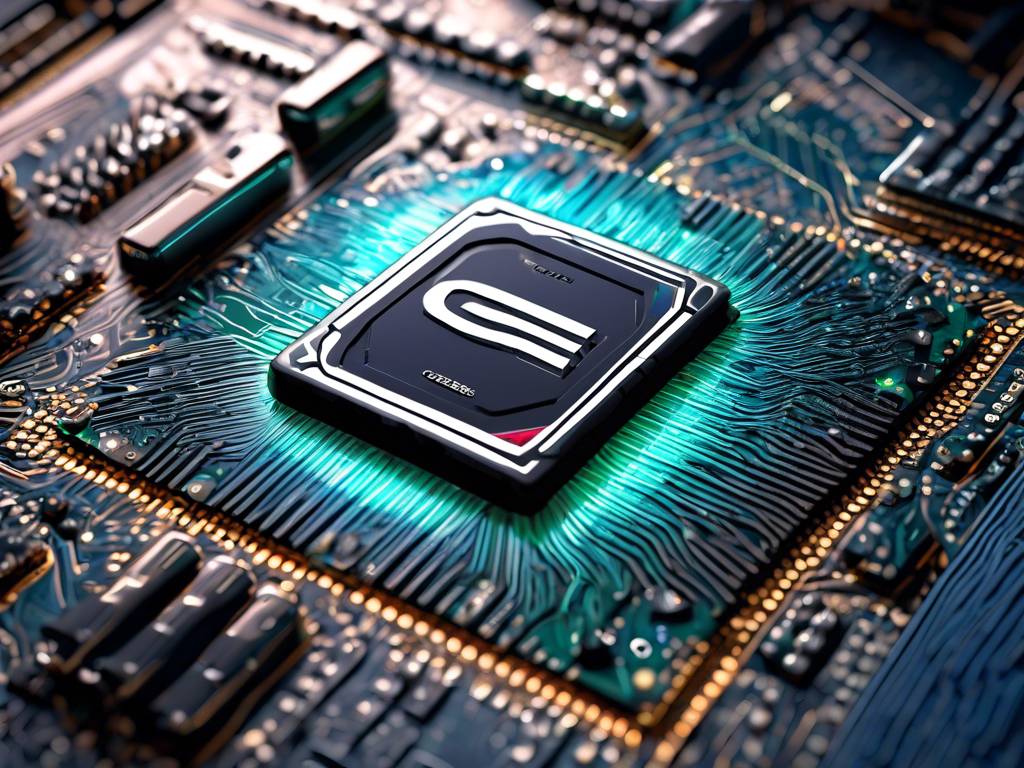Cerebras Systems Introduces Wafer Scale Engine 3 (WSE-3) for AI
Cerebras Systems has made a significant breakthrough in the field of generative artificial intelligence (AI) with the introduction of the Wafer Scale Engine 3 (WSE-3). This chip, unveiled on March 13, 2024, is now considered the largest semiconductor in the world and aims to enhance the capabilities of large language models with tens of trillions of parameters. The tech industry is currently engaged in a race to develop more powerful and efficient AI models, and Cerebras’ WSE-3 chip is a major step forward in this endeavor.
Doubling Down on Performance
The WSE-3 chip builds upon its predecessor, the WSE-2, by doubling its performance without increasing power consumption or cost. This achievement aligns with Moore’s Law, which predicts that chip circuitry will become twice as complex every 18 months. Manufactured by TSMC, the WSE-3 chip features a decrease in transistor size from 7 nanometers to 5 nanometers. This reduction allows for an increase in transistor count to 4 trillion on a chip that is nearly the size of a 12-inch semiconductor wafer. As a result, the computational power of the chip doubles from 62.5 petaFLOPs to 125 petaFLOPs, leading to improved efficiency in training AI models.
Advantages Over Competitors
Cerebras’ WSE-3 chip surpasses Nvidia’s H100 GPU, the industry standard, in terms of size, memory, and computational capabilities. With 52 times more cores and 800 times larger on-chip memory, as well as significant improvements in memory bandwidth and fabric bandwidth, the WSE-3 delivers the most substantial performance improvements ever seen in AI computations. These enhancements enable the training of large neural networks, including a hypothetical 24 trillion parameter model on a single CS-3 computer system, showcasing the immense potential of the WSE-3 in accelerating AI model development.
Innovations in AI Training and Inference
The release of the WSE-3 brings about advancements in both the training and inference phases of AI model development. Cerebras highlights the chip’s simplified programming process, which requires fewer lines of code compared to GPUs when modeling GPT-3. The ease with which 2,048 machines can be clustered and trained allows this design to train large language models 30 times faster than current leading machines.
Cerebras has also announced a partnership with Qualcomm to enhance the inference stage, which involves making predictions based on the trained AI model. Through techniques such as sparsity and speculative decoding, this collaboration aims to minimize computational costs and energy usage in generative AI models. As a result, this strategic alliance seeks to optimize the efficiency of AI applications throughout their entire lifecycle, from training to real-world deployment.
Hot Take: Cerebras Unveils Wafer Scale Engine 3 (WSE-3) for Enhanced AI Capabilities 🚀
Cerebras Systems has made a groundbreaking announcement with the introduction of the Wafer Scale Engine 3 (WSE-3), designed to revolutionize generative artificial intelligence (AI). This chip, hailed as the world’s largest semiconductor, is set to advance large language models with its unprecedented capabilities. With double the performance of its predecessor without increased power consumption or cost, the WSE-3 chip marks significant progress per Moore’s Law. It boasts a reduced transistor size and increased transistor count, resulting in improved computational power and efficiency in training AI models. Cerebras’ WSE-3 chip also outshines competitors in terms of size, memory, and computational capabilities, making it a game-changer in the AI industry. The chip’s innovations in AI training and inference further streamline the development process and optimize the efficiency of AI applications. With this breakthrough technology, Cerebras Systems is poised to lead the way in shaping the future of AI.





 By
By
 By
By
 By
By
 By
By
 By
By
 By
By